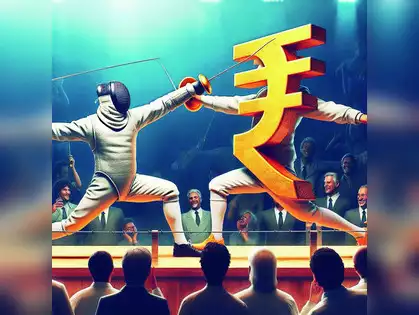Synopsis
It would be wrong to say that RBI blindly follows the US Fed. But it targets CPI, and that can lead to errors. India’s WPI has changed little since late 2022, moving up and down in a 4% band around 150.0. But CPI has risen much more, and that is the figure Shaktikanta Das looks at.
I’ve long been sceptical of the ability of central banks, especially RBI, to fine-tune interest rates to check inflation. The entire theoretical basis of inflation-targeting is suspect. The US Federal Reserve has persistently failed to check inflation despite projecting a substantial fall, leading some analysts to expect up to six interest-rate cuts in 2024. When it became clear that the Fed was off target, analysts cut their prediction to three rate cuts. Now, some wonder if rates will fall at all.
In India and the world over, interest rates are too high. The Fed has not cut its interest rate, and emerging markets are hesitant to move in a different direction, fearing market accusations of loose monetary policy and an outflow of dollars.
They should take the advice of Krishna Srinivasan, head of Asia and Pacific department of IMF. He said last week, ‘We recommend Asian central banks to focus on domestic inflation, and avoid making their policy decisions overly dependent on anticipated moves by the Federal Reserve.’
It would be wrong to say that RBI blindly follows the US Fed. But it targets CPI, and that can lead to errors. India’s WPI has changed little since late 2022, moving up and down in a 4% band around 150.0. But CPI has risen much more, and that is the figure Shaktikanta Das looks at.
Is that the right index? In India, food and fuel account for a big weightage in CPI. And monetary theory tells us that these are the commodities whose price is least likely to affected by changes in the interest rate. Besides, CPI has a poor coverage of services.
Arguably the best index to use is GDP deflator, the most comprehensive one typically falling between WPI and CPI. GDP deflator has, of late, been exceptionally low – some estimate it at just 1.5%. In which case, RBI’s repo rate of 6.5% is surely much too high.
The low GDP deflator is one reason real GDP growth has boomed this year, exceeding 8% in the first three quarters. Does it make sense to use GDP deflator to boast about fast GDP growth, and then use a totally contrary index to argue that prices are too high and justify high interest rates?
In any event, the example of US Fed inspires little confidence in inflation-targeting. After the Great Recession of 2008, the Fed often worried about deflation rather than inflation, and tried in vain to get inflation up from 1% to 2%. Theories abounded about a new era in which massive fiscal and monetary stimuli would not cause inflation.
But just as that theory began to gain ground, Covid and Ukraine struck, and inflation skyrocketed. The Fed initially dismissed this as a temporary spike, but had to eat crow when inflation crossed 8%, four times the target. It then raised interest rates steeply and repeatedly. But inflation remained around 6%.
Then the Fed, in 2023, predicted the end of inflation and presented a rosy picture of coming interest-rate cuts. Events have forced it to backtrack. Its performance as a predictor of inflation has been castigated by WSJ’s Joseph Sternberg.
‘The common thread running through the Fed’s failure to predict accelerating inflation in 2021 and to track disinflation accurately now is the central bank’s model of the economy…. The primary model, known as FRBUS, is impressive. Central-bank staff can plug some 500 variables into about 170 equations to try to understand how changes to the unemployment rate, household incomes, mortgage rates or myriad other factors might influence economic growth and inflation.’
Alas, all those fancy equations do not guarantee accuracy. ‘FRBUS doesn’t adequately account for the effects of fiscal policy, such as the $10 trillion in cumulative deficit spending since the start of 2020…. The model didn’t predict the inflationary consumption explosion of that era…. The model chronically misunderstands the labour market and overestimates the effect of a tight labour market on inflation.’
That is quite an indictment. But the problem actually lies deeper in the very notion that central banks can accurately target inflation. FT’s Brendan Greeley has castigated attempts by the Fed and other central banks to explain away their failures citing ‘long and variable lags’.
Monetary measures can take 12-18 months for full impact. And, in such a long period, so many other factors change that nobody can accurately estimate the contribution of monetary measures. Greeley says that the phrase ‘long and variable lags’ is a technical-sounding way of saying, ‘We don’t know, and we don’t know when we will know.’
We cannot expect Shaktikanta Das to abandon inflation-targeting. But we can hope he will not look at CPI alone and will pay some heed to GDP deflator and start cutting high interest rates. Among central bankers, he can be a leader, rather than a follower, in cutting rates.
This article was originally published by The Economic Times on April 23, 2024.


